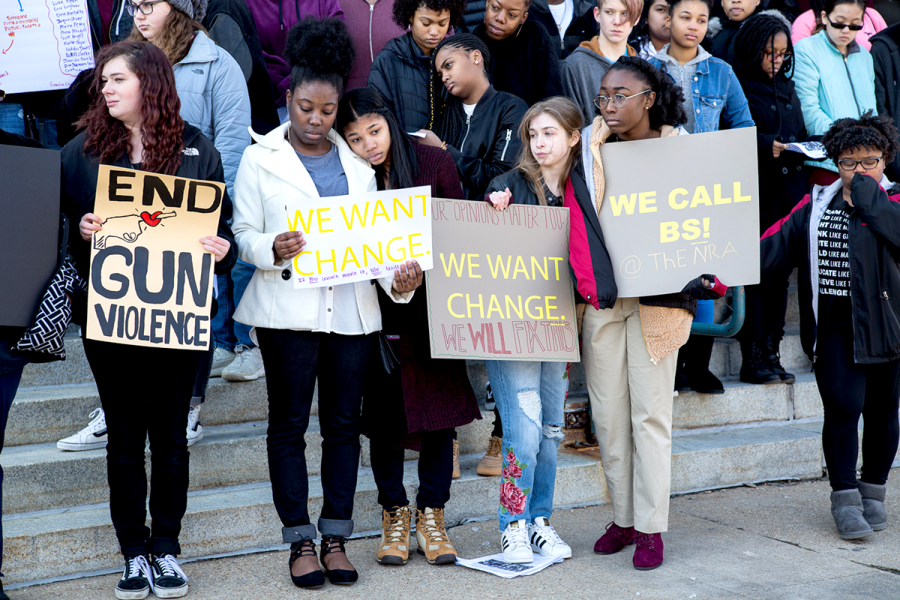City council considers gun violence intervention
June 27, 2019
The Richmond City Council was briefed on municipal efforts to stem gun violence and historical trends affecting their goal of going one year without a homicide at their meeting Tuesday night.
The city’s Office of Neighborhood Safety staged 57 gun violence interventions in 2018 as part of their ongoing mission to reduce the number of shootings and homicides.
“I’ve parked my car in front of somebody’s car where they can’t leave,” program manager Sam Vaughn told the council when asked to explain what happens in an intervention.
“We do whatever we can to interrupt that shooting from taking place,” Vaughn said.
His team mediated more than 200 conflicts in nearly 5,900 hours of outreach last year, and during that time they contacted more than 4,600 people. They also have a fellowship program in which at-risk youth have multiple daily contacts with team members who provide resources like goal development, case management and social services support.
“It has been a vast mischaracterization of our work that we pay criminals to behave,” Vaughn said. “We just accept it as clickbait.”
There have been 106 individuals who’ve matriculated through the fellowship program, and 96 percent of them are still alive, according to Vaughn.
“If you are a person who has a family member or a neighbor who fits the criteria of the young people we serve and they are on a path of destruction and seem to listen to no one, give us a chance,” Vaughn said. “If they trust us enough, we will help them find other options.”
He argued that preventing gun violence often comes down to community buy-in, and creating a cultural shift away from violent responses to disputes.
“What’s the best thing (we) can do to help you all do your job and to really help in that culture shift you’ve discussed?” asked Councilman Jael Myrick.
“There’s a lot that can be done,” Vaughn said. “I think the most important thing this community can do to help young people see a future for themselves is to see a future for them.”
In many cases, the individuals he works with feel discriminated against by neighbors or shopkeepers who seem quick to call the police based solely on the way they look, according to Vaughn.
“Best believe that these young people feel that,” he said. “They feel it.”
“At least acknowledge that we gave these young people blankets full of smallpox and then we’re blaming them for being sick,” Vaughn said.
Despite their successes, the Office of Neighborhood Safety does face some challenges in terms of grant funding. There is limited funding available for programs like this one, and the organizations making that money available like to see it go to the neediest cities.
“By our statistics, we just aren’t one of those cities anymore,” Vaughn said.
Richmond has made national news in recent years for their successful efforts at community policing and gun violence reductions, with a steady downward trend since the murder rate peaked in 1991 during the crack ocaine epidemic.
During a seperate presentation on historical trends in Richmond’s violent crime, police Chief Allwyn Brown told the City Council that most of the homicide victims his department sees are young men of color from 18 to 25.
“The same age group is represented most often as the suspects,” Brown said.
The crimes frequently occur during the spring and summer months, when the days are longer. Daylight makes it easier to pursue and locate targets, but it also makes it easier for community members to recognize the perpetrator.
“Most often the case is some form of dispute between the parties, but motives can overlap,” Brown said.
While the number of homicides committed is down, homelessness and domestic violence have played a part in a larger portion of the homicides occurring in Richmond in recent years.
Over the last six years, homelessness was a factor in 6 percent of the city’s homicides. Over the last three years, however, it was a factor in 15 percent of the city’s homicides. Data shows a similar trend in domestic violence killings.
While the number of homicides in these categories is down overall, police are still making an effort to curb these kinds of killings through neighborhood check-ins at homeless encampments and the use of the Lethality Assessment Tool, which is a series of questions officers use to gage the likelihood and severity of future assaults in domestic cases.
Based on the victims’ responses to those questions, officers can immediately connect victims with services and resources to help prevent future violence.
Anyone interested in finding out more about Vaughn’s work can check out his TED Talk on ending violence through empowerment at https://www.tedmed.com/talks/show?id=527628.
















